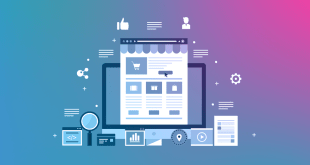In the fast-paced digital landscape, understanding user behavior on websites is crucial for businesses aiming to thrive online. Gone are the days when website analytics merely provided basic insights. Today, the advent of AI-powered analytics tools has revolutionized the way we track and analyze user behavior data. In this comprehensive blog, we delve deep into the latest advancements in user behavior tracking, focusing on cutting-edge AI-powered solutions that unlock valuable insights. From real-time analysis to predictive modeling, these tools offer unprecedented capabilities that help businesses stay ahead in their game.
Decoding User Behavior on Website: The Essence of Data-Driven Insights
Understanding user behavior on a website is like peering into the minds of your visitors. It involves gathering, interpreting, and analyzing data on how users interact with your site, including the pages they visit, the actions they take, and the duration of their stay. By delving into this data treasure trove, businesses can gain invaluable insights into user preferences, pain points, and conversion triggers. It forms the bedrock of data-driven decision-making and enables optimization for enhanced user experience and increased conversions.
The Rise of AI in User Behavior Tracking
As the volume and complexity of data continue to grow exponentially, traditional analytics tools are struggling to keep pace. Enter AI-powered analytics, a game-changer in the field of user behavior tracking. Leveraging machine learning algorithms, AI-driven tools can process vast amounts of data swiftly, extracting meaningful patterns and trends that would otherwise go unnoticed. This empowers businesses with real-time and predictive insights, facilitating agile decision-making and the ability to adapt to dynamic user preferences.
Real-Time User Behavior Analysis: Seizing Opportunities on the Fly
In today’s hyper-competitive digital landscape, every second counts. Real-time user behavior analysis enables businesses to capitalize on opportunities as they unfold. With AI-driven tools continuously monitoring user interactions, businesses can instantly identify emerging trends, track the performance of marketing campaigns, and promptly respond to user needs. This agile approach can make all the difference in staying ahead of the competition.
Predictive Modeling: Anticipating User Actions and Tailoring Experiences
One of the most awe-inspiring capabilities of AI-powered analytics tools is predictive modeling. By analyzing historical data, these tools can forecast future user behavior, allowing businesses to pre-emptively tailor their offerings. From personalized product recommendations to targeted marketing strategies, predictive modeling enhances user engagement, loyalty, and ultimately, conversions.
Heatmaps and Clickstream Analysis: Unveiling User Navigation Patterns
AI-powered analytics tools offer a plethora of visual aids that elucidate user behavior patterns. Heatmaps provide a vivid representation of which areas of a webpage attract the most attention, while clickstream analysis tracks the sequential clicks made by users. These insights help businesses optimize website layouts, identify content gaps, and improve the overall user experience.
User Segmentation: Understanding Diverse Audience Groups
Not all users are the same, and AI-driven analytics tools recognize this fact through user segmentation. By categorizing users based on shared characteristics, behaviors, or demographics, businesses can customize their marketing strategies for maximum impact. This level of personalization fosters stronger connections with users and boosts brand loyalty.
A/B Testing: Enhancing User Experience Through Experimentation
AI-powered analytics tools simplify A/B testing, a powerful technique for optimizing websites. By testing variations of web elements, such as headlines, images, or call-to-action buttons, businesses can identify the most effective versions. Continuous experimentation based on data-driven insights ensures a constant refinement of user experiences.
Addressing User Churn: Proactive Strategies for Retention
User churn, the rate at which users disengage or leave a website, is a critical metric for businesses. AI-powered analytics tools can detect early warning signs of churn, allowing businesses to implement proactive retention strategies. By understanding the factors contributing to churn, businesses can implement targeted improvements, thereby reducing attrition and maximizing customer lifetime value.
Ensuring Data Privacy and Security: Safeguarding User Trust
As businesses collect and analyze vast amounts of user data, ensuring data privacy and security becomes paramount. AI-powered analytics tools incorporate robust data protection measures to safeguard sensitive information and comply with data regulations. Prioritizing user trust builds a strong foundation for long-term customer relationships.
Final Words: Empowering Businesses with Unparalleled Insights
In conclusion, AI-powered analytics tools have transformed the way businesses track and leverage user behavior data. From real-time analysis to predictive modeling and personalized experiences, these tools unlock unparalleled insights that drive growth and success. By harnessing the power of AI, businesses can stay ahead of the competition, optimize user experiences, and build lasting connections with their audiences.
Commonly Asked Questions
1. How do AI-powered analytics tools enhance user experience?
AI-powered analytics tools enhance user experience by offering real-time insights that enable businesses to tailor their offerings to individual user preferences. These tools also facilitate predictive modeling, allowing businesses to anticipate user actions and proactively cater to their needs.
2. What role do heatmaps and clickstream analysis play in user behavior tracking?
Heatmaps and clickstream analysis provide visual representations of user interactions with a website. Heatmaps show the areas of a webpage that attract the most attention, while clickstream analysis reveals the sequential clicks made by users. These insights help businesses optimize website layouts and identify areas for improvement.
3. How can AI-powered analytics help businesses reduce user churn?
AI-powered analytics tools can detect early warning signs of user churn by analyzing user behavior patterns. By understanding the factors contributing to churn, businesses can implement targeted improvements and proactive retention strategies, reducing attrition and maximizing customer loyalty.
4. What benefits does user segmentation offer to businesses?
User segmentation allows businesses to categorize users based on shared characteristics or behaviors. This enables personalized marketing strategies and targeted communication, fostering stronger connections with users and boosting brand loyalty.
5. How do AI-powered analytics tools ensure data privacy and security?
AI-powered analytics tools incorporate robust data protection measures to safeguard sensitive user information and comply with data regulations. Prioritizing data privacy and security builds user trust and strengthens long-term customer relationships.
 webfily
webfily


